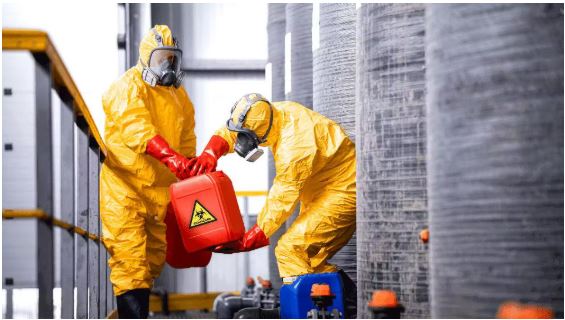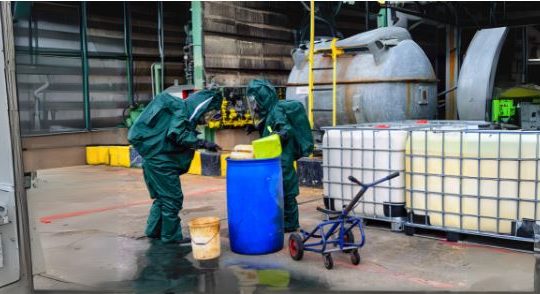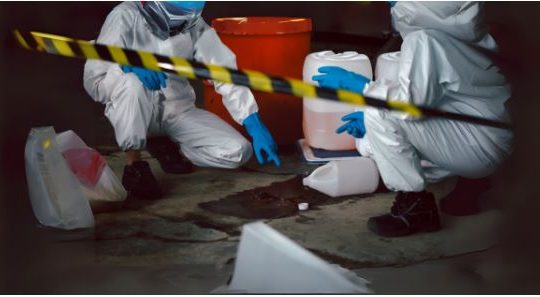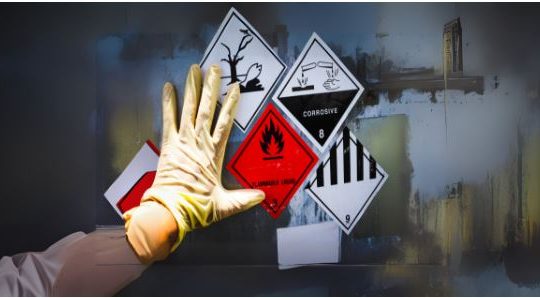
COSHH Level 2
Course Overview:
The Control of Substances Hazardous to Health (COSHH) Level 2 course provides essential knowledge and skills to safely manage hazardous substances in the workplace. This course equips learners with the understanding needed to identify, assess, and control risks associated with hazardous materials, ensuring compliance with health and safety regulations. Designed for employees across various industries, this training helps create a safer working environment and minimizes health risks related to exposure to harmful substances.
Benefits:
- Regulatory Compliance: Gain the knowledge required to comply with COSHH regulations and workplace safety standards.
- Improved Workplace Safety: Learn how to reduce risks related to hazardous substances, protecting yourself and others.
- Versatility Across Industries: Applicable to various sectors, including manufacturing, healthcare, construction, and laboratories.
- Enhanced Professional Skills: Build your credentials in health and safety management, boosting career growth.
Learning Outcomes:
By completing this course, learners will:
- Understand the principles and importance of COSHH in the workplace.
- Identify hazardous substances and assess the risks associated with them.
- Understand labeling and safety data sheets (SDS) for hazardous substances.
- Develop safe practices for handling, storing, and disposing of hazardous materials.
- Conduct COSHH risk assessments and implement effective control measures.
- Recognize employer and employee responsibilities under COSHH regulations.
Study Units:
- Introduction to COSHH
- What is COSHH, and why is it important?
- Legal framework and COSHH regulations.
- Identifying Hazardous Substances
- Types of hazardous substances: chemicals, biological agents, and dust.
- Understanding hazard symbols and labeling.
- COSHH Risk Assessments
- Steps involved in carrying out a COSHH risk assessment.
- Evaluating and prioritizing risks.
- Control Measures for Hazardous Substances
- Engineering controls, personal protective equipment (PPE), and safe work practices.
- Substitution and elimination of hazardous materials.
- Safe Handling and Storage
- Procedures for safely handling, storing, and disposing of hazardous substances.
- Spill management and emergency response.
- Employer and Employee Responsibilities
- Understanding roles in ensuring compliance with COSHH regulations.
- Workplace training and communication.
- Health Monitoring and Reporting
- Importance of health surveillance for employees exposed to hazardous substances.
- Recording and reporting requirements.
Career Progression:
Completing the COSHH Level 2 course opens up opportunities for roles such as:
- Health and Safety Officer: Oversee workplace compliance with health and safety standards, including hazardous substance management.
- Safety Coordinator: Implement and monitor safety measures related to COSHH in various workplace settings.
- Warehouse or Site Supervisor: Manage hazardous materials safely and train employees on COSHH compliance.
- Laboratory Technician: Apply COSHH principles when handling chemicals and biological substances.
Environmental Health Assistant: Support organizations in maintaining health and safety compliance, particularly with hazardous materials.
Our assessment process is designed to ensure every learner achieves the required level of knowledge, skills, and understanding outlined in each course unit.
Purpose of Assessment
Assessment helps measure how well a learner has met the learning outcomes. It ensures consistency, quality, and fairness across all learners.
What Learners Need to Do
Learners must provide clear evidence that shows they have met all the learning outcomes and assessment criteria for each unit. This evidence can take different forms depending on the course and type of learning.
Types of Acceptable Evidence
Assignments, reports, or projects
Worksheets or written tasks
Portfolios of practical work
Answers to oral or written questions
Test or exam papers
Understanding the Structure
Learning outcomes explain what learners should know, understand, or be able to do.
Assessment criteria set the standard learners must meet to achieve each learning outcome.
Assessment Guidelines
All assessment must be authentic, current, and relevant to the unit.
Evidence must match each assessment criterion clearly.
Plagiarism or copied work is not accepted.
All learners must complete assessments within the given timelines.
Where applicable, assessments may be reviewed or verified by internal or external quality assurers.
Full learning outcomes and assessment criteria for each qualification are available from page 8 of the course handbook.
Top Courses
No results found.
Related Courses
Let's Get in touch
Deleting Course Review
Course Access
This course is password protected. To access it please enter your password below:



